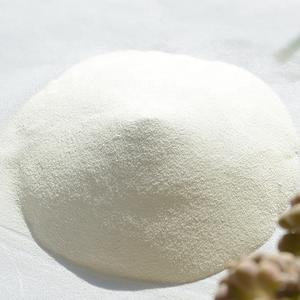1. Introduction
Just 24 hours ago, the European Chemicals Agency (ECHA) updated its preliminary risk assessment on common anionic surfactants, reigniting public debate over sodium lauryl sulfate (SLS) in everyday products. With increasing consumer demand for gentler, eco-friendly ingredients, understanding how SLS stacks up against newer alternatives like decyl glucoside or sodium cocoyl isethionate has never been more relevant.

Sodium lauryl sulfate—also known as sodium dodecyl sulfate (SDS)—is one of the most widely used anionic surfactants globally. Found in everything from shampoos to herbicides, its effectiveness as a foaming and cleansing agent is undeniable. But as awareness grows about skin irritation and environmental impact, formulators are turning to milder options. This article dives deep into SLS’s chemistry, compares it with key alternatives, and evaluates where it still holds an edge.
2. What Is Sodium Lauryl Sulfate—and Why Does It Matter?
Sodium lauryl sulfate (SLS), chemically identical to sodium dodecyl sulfate, is a synthetic anionic surfactant derived from lauryl alcohol (often sourced from coconut or palm kernel oil). Its molecular structure features a hydrophobic 12-carbon tail and a hydrophilic sulfate head, enabling it to reduce surface tension and lift oils from surfaces—making it a powerhouse cleanser.
The meaning of surfactant lies in its ability to interact with both water and oil. SLS excels here, which explains its dominance in products labeled ‘sls sodium lauryl sulfate‘ or ‘na lauryl sulfate.’ However, its strong detergency comes at a cost: potential skin and eye irritation, especially in high concentrations.
3. SLS vs. Sodium Laureth Sulfate: The Ethoxylation Difference
Often confused, sodium laureth sulfate (SLES)—also called sodium lauryl ether sulfate or sodium lauryl ether sulphate—is not the same as SLS. The key difference? Ethoxylation. SLES is created by adding ethylene oxide to lauryl alcohol before sulfation, resulting in a longer, more hydrophilic chain.

This ethoxylated structure makes SLES significantly milder than SLS while retaining excellent foaming properties. That’s why ‘sodium lauryl ether sulphate in shampoo’ is far more common in premium formulations. However, concerns about 1,4-dioxane (a potential byproduct of ethoxylation) have prompted stricter manufacturing controls.
4. Gentler Alternatives: Amphoteric and Non-Ionic Surfactants
To counter SLS’s harshness, many modern products blend it with amphoteric surfactants like cocamidopropyl betaine (also marketed as coco betaine or amidopropyl betaine). These molecules carry both positive and negative charges depending on pH, offering mildness and foam stabilization without compromising cleansing.
- Cocamidopropyl betaine enhances lather and reduces irritation when paired with SLS.
- Alkyl polyglucosides (e.g., decyl glucoside, coco glucoside) are non-ionic surfactants derived from sugar and fatty alcohols. They’re biodegradable, non-toxic, and ideal for sensitive skin.
- Sodium lauroyl sarcosinate and sodium cocoyl glutamate offer amino acid-based cleansing with low irritation potential.
These alternatives are increasingly favored in ‘bio surfactants’ and natural product lines, though they often lack the raw cleaning power of SLS in hard-water conditions.

5. Industrial and Agricultural Uses: Beyond Personal Care
SLS isn’t just for shampoo—it’s also a common surfactant for herbicides and weed killers. In agriculture, it acts as a wetting agent for grass, helping active ingredients penetrate waxy plant cuticles. Similarly, methylated seed oil and lignin sulfonate serve as adjuvants, but SLS remains popular due to its low cost and efficacy.
However, newer non-ionic surfactants like polysorbate 80, Span80, or Pluronic 127 (poloxamer 188) are gaining traction as ‘lawn wetting agents’ because they’re less phytotoxic. Even cationic surfactants like cetyl trimethyl ammonium bromide (CTAB) or cetyltrimethylammonium bromide appear in specialized formulations, though their positive charge limits compatibility with anionic systems.
6. Safety, Regulation, and Market Trends
While ‘sodium lauryl sulfate for sale’ remains abundant—from suppliers like Rohit Surfactants Private Limited to global chemical distributors—regulatory scrutiny is tightening. The EU now requires clearer labeling, and brands are reformulating to avoid ‘sls sulfate’ altogether.
True alternatives must balance performance, cost, and sustainability. Fluoro surfactants offer extreme efficiency but face environmental bans. Bio surfactants like rhamnolipids show promise but remain expensive. Meanwhile, sodium coco sulfate (sometimes misleadingly called ‘coco sodium sulfate’) markets itself as a ‘natural SLS,’ though it’s chemically similar and can still irritate.
Notably, ammonium lauryl sulfate (or ammonium dodecyl sulfate) behaves much like SLS but is slightly more soluble—common in clarifying shampoos. And don’t confuse it with sodium deoxycholate or sodium oleate, which are bile salt–based or soap-type surfactants with entirely different mechanisms.
7. Conclusion
Sodium lauryl sulfate remains a benchmark in surfactant performance, but its reign is being challenged by safer, greener alternatives. While SLS (or natrium lauryl sulfate) delivers unmatched cleansing and foaming, its drawbacks have accelerated innovation in amphoteric, non-ionic, and bio-based surfactants. For consumers, understanding labels—like distinguishing ‘sls sodium’ from ‘sls sodium laureth sulfate’—empowers smarter choices. For formulators, the future lies in hybrid systems that leverage the strengths of multiple surfactant classes: anionic for power, amphoteric for mildness, and non-ionic for stability.
Our Website founded on October 17, 2012, is a high-tech enterprise committed to the research and development, production, processing, sales and technical services of ceramic relative materials such as Sodium. Our products includes but not limited to Boron Carbide Ceramic Products, Boron Nitride Ceramic Products, Silicon Carbide Ceramic Products, Silicon Nitride Ceramic Products, Zirconium Dioxide Ceramic Products, etc. If you are interested, please feel free to contact us.


